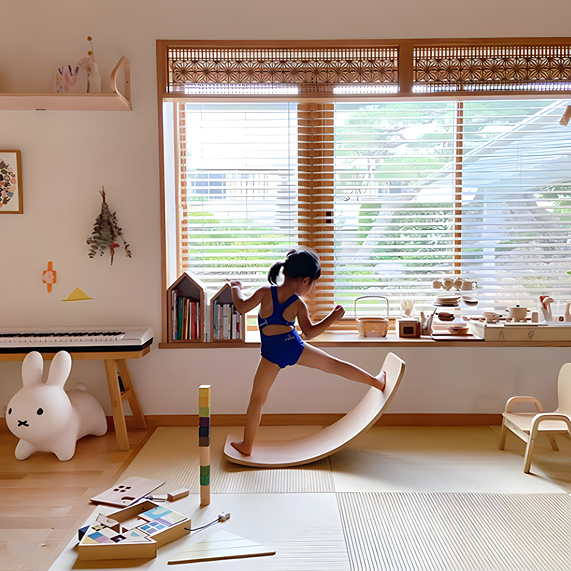
Mastering the Balance Board: Exercises and Outdoor Adventures
Share
When it comes to fitness and fun, the balance board is a versatile tool that offers a wide range of benefits for the entire family. Originally designed to improve balance, stability and coordination, this simple yet effective piece of equipment has evolved to become a staple in every home for indoor and outdoor activities alike. In this article, we'll explore how to use the balance board for exercises and outdoor adventures, proving that it's not just meant for indoor use and showcasing how kids and adults can use this amazing companion.
For Adults and Kids
- Balance Training: Start by simply standing on the balance board with your feet hip-width apart. Focus on maintaining your balance as the board tilts from side to side or front to back. Once you feel comfortable, challenge yourself by closing your eyes or performing exercises such as squats or lunges while balancing.
- Core Strengthening: Engage your core muscles by performing plank variations on the balance board. Start in a plank position with your hands on the board and your body in a straight line from head to heels. Hold for as long as you can, focusing on keeping your core tight and stable.
- Leg Exercises: Incorporate leg exercises such as squats, lunges, and calf raises into your balance board routine to improve lower body strength and stability. Use the instability of the board to challenge your muscles and enhance proprioception.
- Upper Body Workouts: Use the balance board to add an extra challenge to traditional upper body exercises such as push-ups and shoulder presses. Place your hands on the board while performing these exercises to engage your stabilizer muscles and improve overall strength.
- Surf Training: If you're a surfer or aspire to be, the balance board is an excellent tool for surf training. Practice your balance and coordination skills on the board to improve your surfing performance and enhance your overall water sports abilities.
- Yoga and Pilates: Perform a three-legged downward facing dog by putting more weight forward and balancing between the hands and feet. Enter into Goddess pose by placing both feet on opposite ends of the balance board and pointing your tiptoes outward, while bending your knees and extending your arms to the side, holding your balance. Perform a half moon pose by putting similar weight between your single-sided bottom hand and bottom foot while using that base to lift your opposite arm and leg into lateral flexion. Perform pose (half lunge) by facing the front of the balance board and placing feet on the extremes of the board and bending the front leg and extending the back leg while lifting hands overhead.
For Babies and Toddlers
Balance boards are excellent ways in which babies and toddlers can interact with their environment while developing essential skills for physical and cognitive development.
- Standing Practice: Encourage your baby or toddler to stand on the balance board while holding onto a stable surface for support. This helps them develop their balance and stability skills as they learn to distribute their weight evenly and adjust to the shifting surface of the board.
- Rocking and Rolling: Babies and toddlers can enjoy the sensation of rocking and rolling on the balance board while seated or kneeling. This gentle movement helps stimulate their vestibular system, which is responsible for balance and spatial orientation, while also strengthening their core muscles.
- Crawling and Climbing: Place the balance board on its side to create a ramp-like surface for babies and toddlers to crawl or climb over. This activity encourages them to use their upper body strength and coordination as they navigate the incline, promoting gross motor skill development.
- Sensory Exploration: Incorporate different textures and materials onto the surface of the balance board to engage your baby or toddler's senses. You can add soft fabric, textured mats, or sensory toys to encourage tactile exploration while they play on the board.
- Imaginative Play: Use the balance board as a prop for imaginative play activities, such as pretending to surf or ride a skateboard. This not only enhances their balance and coordination skills but also fosters creativity and imagination as they engage in pretend play scenarios.
Overall, incorporating the balance board into your household’s routine offers numerous benefits, including improving balance, strengthening core muscles, stimulating sensory development, improving flexibility and encouraging imaginative play. Plus, it's a fun activity to explore in a group setting with your family and friends (hint: buying more than one multiples the fun).



